A Bias in the Prediction of Tastes - Carnegie Mellon University
A Bias in the Prediction of Tastes - Carnegie Mellon University
A Bias in the Prediction of Tastes - Carnegie Mellon University
You also want an ePaper? Increase the reach of your titles
YUMPU automatically turns print PDFs into web optimized ePapers that Google loves.
I995] THE PREDICTION OF TASTES 93I<br />
on, first, <strong>the</strong> surpris<strong>in</strong>gly long time it has taken social scientists to discover <strong>the</strong><br />
effect, given its magnitude and robustness; second, <strong>the</strong> fact that <strong>the</strong> endowment<br />
effect disappears when people make valuation decisions on behalf <strong>of</strong> ano<strong>the</strong>r<br />
person, as if <strong>the</strong>y are not aware that o<strong>the</strong>rs will get attached to objects <strong>in</strong> <strong>the</strong>ir<br />
possession (Marshall et al. I987); and third, <strong>the</strong> fact that o<strong>the</strong>r studies have<br />
found that people tend to underestimate how quickly <strong>the</strong>y will adapt to<br />
changed circumstances such as w<strong>in</strong>n<strong>in</strong>g a lottery or becom<strong>in</strong>g paraplegic<br />
(Brickman et al. I978) - i.e. that <strong>the</strong>y underestimate <strong>the</strong> impact <strong>of</strong> reference<br />
po<strong>in</strong>t shifts.<br />
I. EXPERIMENT I<br />
The first experiment was designed to test whe<strong>the</strong>r subjects without an object<br />
could predict how attached <strong>the</strong>y would become if <strong>the</strong>y were endowed with it.<br />
We first elicited hypo<strong>the</strong>tical sell<strong>in</strong>g prices for an object from unendowed<br />
subjects <strong>the</strong>n endowed <strong>the</strong>m with <strong>the</strong> object and elicited an actual sell<strong>in</strong>g price.<br />
Subjects were 27 undergraduates enrolled <strong>in</strong> a core humanities class at<br />
<strong>Carnegie</strong> <strong>Mellon</strong> <strong>University</strong> and 42 adults enrolled <strong>in</strong> two even<strong>in</strong>g classes <strong>in</strong><br />
f<strong>in</strong>ance at <strong>the</strong> <strong>University</strong> <strong>of</strong> Pittsburgh. In each class, <strong>the</strong> experimenter held up<br />
a mug engraved with <strong>the</strong> school logo for <strong>the</strong> students to see. A different style<br />
<strong>of</strong> mug was used at <strong>Carnegie</strong> <strong>Mellon</strong> and at <strong>the</strong> <strong>University</strong> <strong>of</strong> Pittsburgh. A<br />
form was <strong>the</strong>n randomly distributed to approximately half <strong>of</strong> <strong>the</strong> students <strong>in</strong><br />
each class. The form asked <strong>the</strong> students to imag<strong>in</strong>e that <strong>the</strong>y possessed <strong>the</strong> mug<br />
on display and to predict whe<strong>the</strong>r <strong>the</strong>y would be will<strong>in</strong>g to exchange <strong>the</strong> mug<br />
for various amounts <strong>of</strong> money. It was worded as follows:<br />
We are <strong>in</strong>terested <strong>in</strong> your op<strong>in</strong>ion about <strong>the</strong> mug displayed at <strong>the</strong> front <strong>of</strong><br />
<strong>the</strong> room. Imag<strong>in</strong>e that we gave you a mug exactly like <strong>the</strong> one you can<br />
see, and that we gave you <strong>the</strong> opportunity to keep it or trade it for some<br />
money. Below are a series <strong>of</strong> l<strong>in</strong>es marked 'Keep mug__ Trade it for<br />
$ amount .' On each l<strong>in</strong>e check whe<strong>the</strong>r you th<strong>in</strong>k that you would<br />
prefer to keep <strong>the</strong> mug or to trade it <strong>in</strong> for <strong>the</strong> amount <strong>of</strong> money written<br />
on <strong>the</strong> l<strong>in</strong>e. Check one or <strong>the</strong> o<strong>the</strong>r on every l<strong>in</strong>e.<br />
The rema<strong>in</strong>der <strong>of</strong> <strong>the</strong> page consisted <strong>of</strong> 40 l<strong>in</strong>es each conta<strong>in</strong><strong>in</strong>g a choice<br />
between keep<strong>in</strong>g <strong>the</strong> mug or trad<strong>in</strong>g it for an amount <strong>of</strong> money that ranged<br />
from 25 cents to io dollars <strong>in</strong> $0.25 <strong>in</strong>crements. The experimenter waited until<br />
all subjects with a form had completed it. Next, all subjects were presented with<br />
a mug and given a second form which actually provided <strong>the</strong> opportunity to<br />
exchange <strong>the</strong> mug for cash. The <strong>in</strong>structions for <strong>the</strong> second form were directly<br />
analogous to those used <strong>in</strong> <strong>the</strong> prediction form, but made it clear that one <strong>of</strong><br />
<strong>the</strong>ir choices would count. Subjects were told that <strong>the</strong>y would receive <strong>the</strong><br />
option <strong>the</strong>y had circled on one <strong>of</strong> <strong>the</strong> l<strong>in</strong>es - which l<strong>in</strong>e had been determ<strong>in</strong>ed<br />
<strong>in</strong> advance by <strong>the</strong> experimenter.<br />
The experimental design creates two groups <strong>of</strong> subjects, one that completed<br />
<strong>the</strong> prediction form prior to receiv<strong>in</strong>g a mug, and <strong>the</strong> o<strong>the</strong>r that did not. It<br />
allows us to conduct both a between- and with<strong>in</strong>-subject analysis <strong>of</strong> prediction<br />
accuracy. The with<strong>in</strong>-subject analysis compares <strong>the</strong> prelim<strong>in</strong>ary valuation<br />
K Royal Economic Society I995



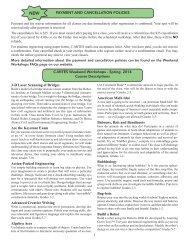
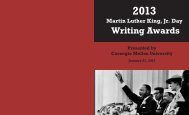
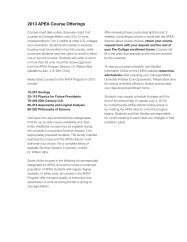

![Pittsburgh Neighborhoods [.pdf] - Carnegie Mellon University](https://img.yumpu.com/22011290/1/190x115/pittsburgh-neighborhoods-pdf-carnegie-mellon-university.jpg?quality=85)
![Curriculum Vitae [.pdf] - Carnegie Mellon University](https://img.yumpu.com/20737100/1/190x245/curriculum-vitae-pdf-carnegie-mellon-university.jpg?quality=85)
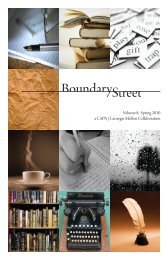
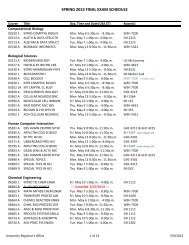
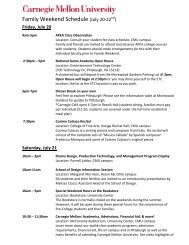
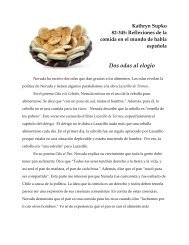


![May 2012 [.pdf] - Carnegie Mellon University](https://img.yumpu.com/12198417/1/190x253/may-2012-pdf-carnegie-mellon-university.jpg?quality=85)
